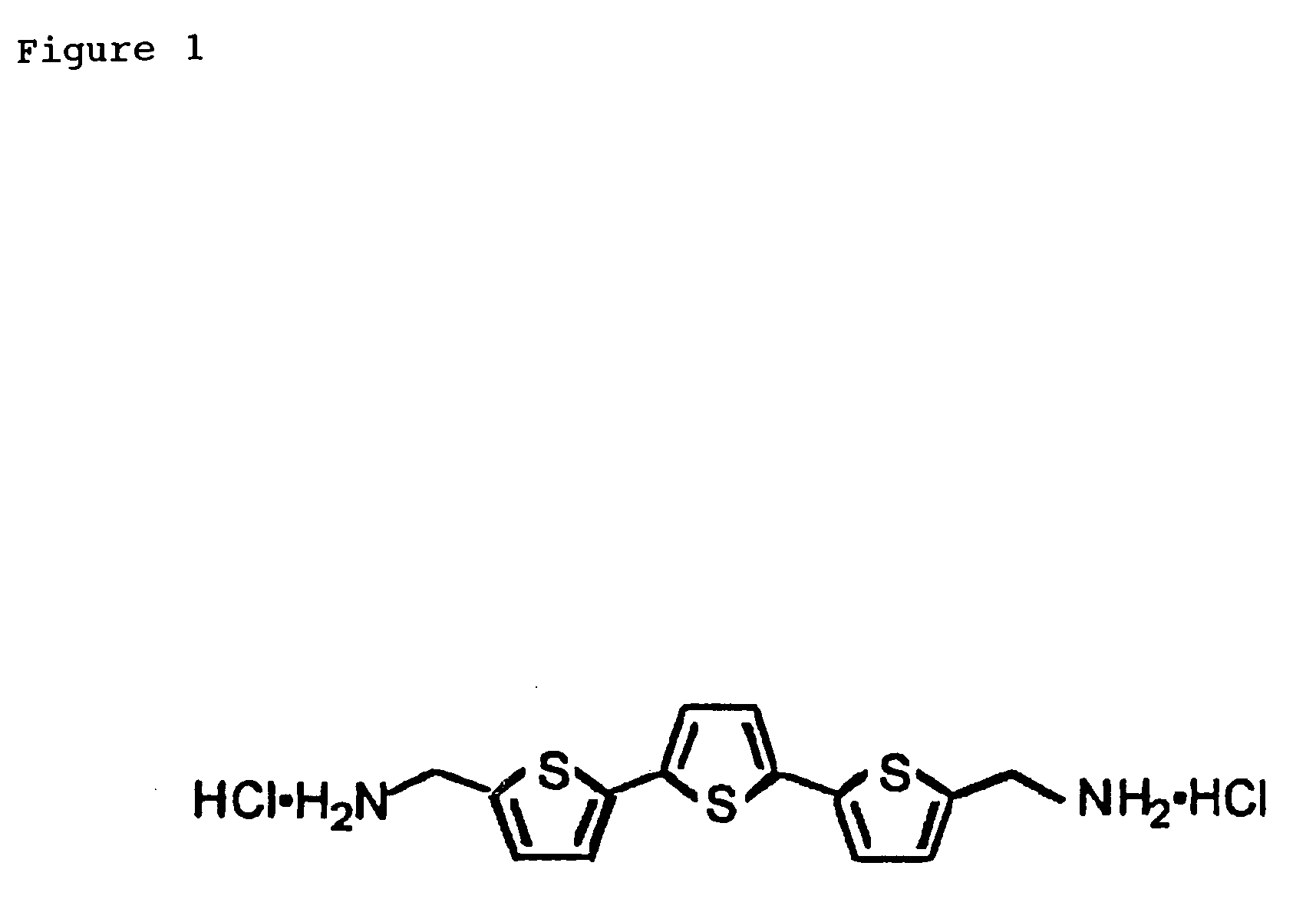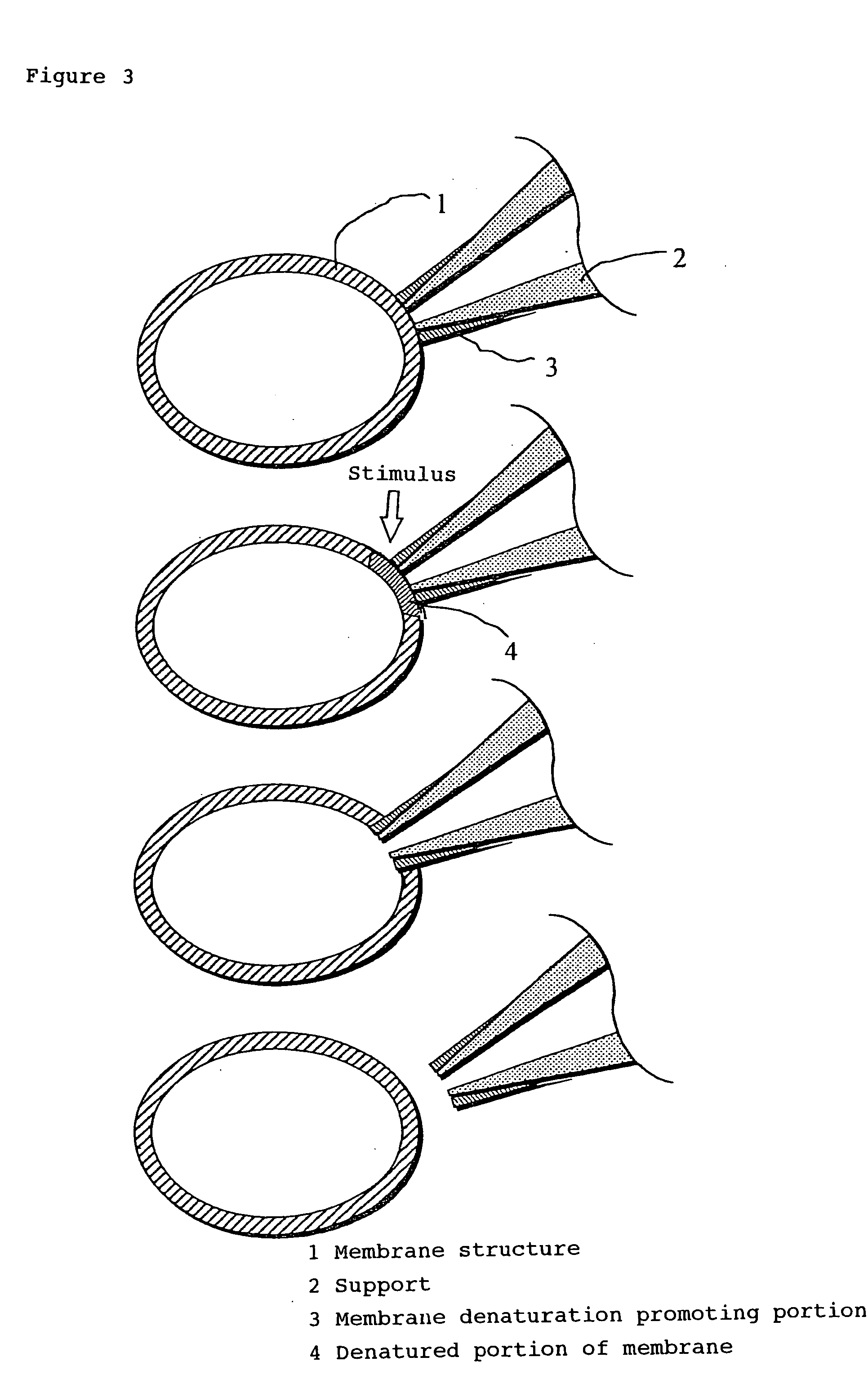Site-specific cell perforation technique
a cell perforation and site technology, applied in the field of site-specific cell perforation technique, can solve the problems of cell death, inability to respond to the demands of cytoengineering, lack of techniques that could control the disruption of the cell membrane, etc., to improve nerve/muscle function, enhance the accumulation/precision of stress-measuring therapeutic electrodes, and improve the accuracy of neural information.
- Summary
- Abstract
- Description
- Claims
- Application Information
AI Technical Summary
Benefits of technology
Problems solved by technology
Method used
Image
Examples
example 1
Culturing Nerve Cell Line PC-12
[0110] Cells of the established nerve cell line PC 12 used as a model of the central nervous system, are ganglia-like cells of adrenal medulla origin. These PC 12 cells were cultured using a NeuroBasal Medium (GIBCO BRL) (pH 7.3) containing 10% heat-inactivated horse serum, 5% bovine fetal serum, 7.35 mg / l L-glutamic acid, and 2 mM L-glutamine, under 95% CO2.
[0111] Passaging was done by detaching cells from the walls of the culture flask by spraying culture medium onto cells, collecting cells by centrifuging at 300 g, for 5 min, inoculating 1 to 3×104 cells / cm per 1 ml into a culture flask (IWAKI Glass) with a bottom surface area of 25 cm2, and changing the medium every two to three days.
[0112] When differentiating PC 12 cells into nerve-like cells, 2.5S of the mouse nerve growth factor (NGFY was added to the medium to a final concentration of 50 ng / ml. The method of preparing the NGF (Murine, 2.5S) dispersed solution for adding into the medium is a...
example 2
Synthesis of 5′5″-bis(aminomethyl)-2,2′:5′,2″-terthiophene
[0119] The photosensitizer used was 5′5″-bis(aminomethyl)-2,2′:5′,2″-terthiophene (BAT), a derivative of α-terthienyl. This compound was synthesized according to “Muguruma et al., J. Heterocyclic Chem., 33, 1-6 (1996)”, and was provided in the state of BAT dihydrochloride. The structure of BAT dihydrochloride is shown in FIG. 1.
[0120] The thiophene oligomer having amino-methyl residue at the terminal, has a high solubility compared with other derivatives of the same type because of this amino-methyl residue. Solubility changes with the dissociation state of this amino-methyl residue. On the other hand, in the case of the BAT of the present invention, it has a bivalent positive charge within acidic aqueous solutions and dissolves easily. In aqueous solutions near a pH region suitable for the body (around 7.4), it has a feature of having both positively-charged monovalent BAT maintaining a high solubility, and non-charged BAT...
example 3
The Measurement of Membrane Resistance and Membrane Potential Following Light Exposure
[0121] Since there is a need to monitor cellular level micro membrane damages, including the recovering process within seconds to a few minutes, the intermembrane potential of the cell membrane, or the ionic current passing through the cell membrane was measured using the patch clamp method, which is an electrophysiology experiment technique.
[0122] The photosensitizer BAT was dispersed in HEPES (25 mM, pH7.4) buffer. The BAT dispersed solution to be added topically near the cells by a micropipette had a BAT concentration of 2 mM, and the dispersed solution to be added throughout the perfusate had a BAT concentration of 0.2 mM.
[0123] Cells were incubated at room temperature within an electrophysiology experimental culture medium.
[0124] The culture medium used for this experiment had a composition of NaCl, 124 mM; KCl, 5 mM; CaCl2.2H2O, 2.4 mM; MgSO4.7H2O, 1.3 mM; glucose 10 mM, in which the pH w...
PUM
| Property | Measurement | Unit |
|---|---|---|
| Force | aaaaa | aaaaa |
| Structure | aaaaa | aaaaa |
Abstract
Description
Claims
Application Information
 Login to View More
Login to View More - R&D
- Intellectual Property
- Life Sciences
- Materials
- Tech Scout
- Unparalleled Data Quality
- Higher Quality Content
- 60% Fewer Hallucinations
Browse by: Latest US Patents, China's latest patents, Technical Efficacy Thesaurus, Application Domain, Technology Topic, Popular Technical Reports.
© 2025 PatSnap. All rights reserved.Legal|Privacy policy|Modern Slavery Act Transparency Statement|Sitemap|About US| Contact US: help@patsnap.com



